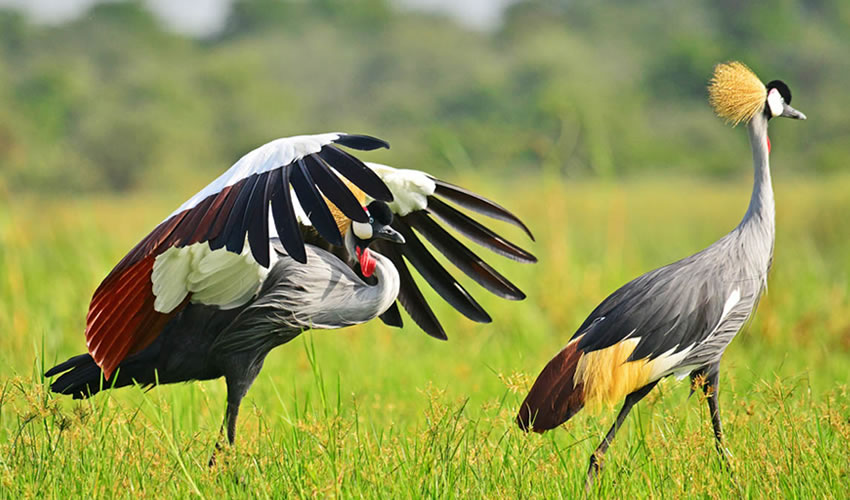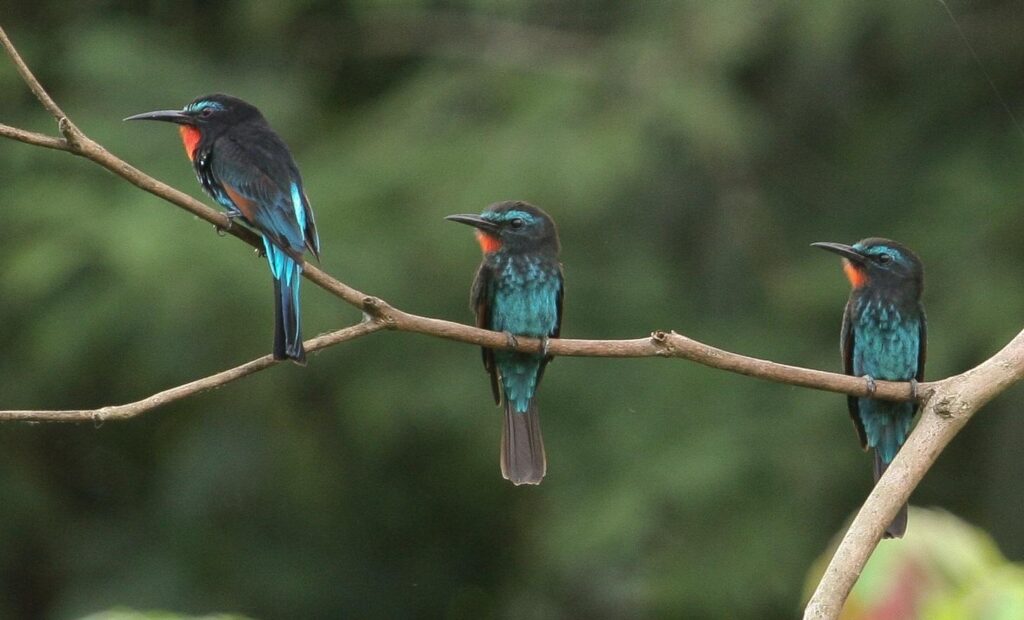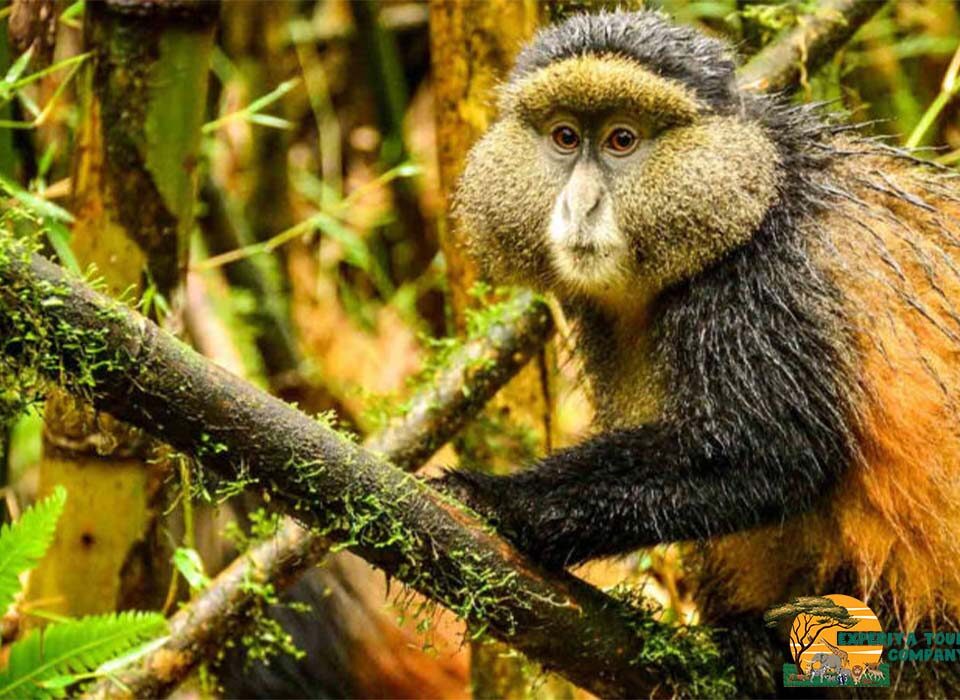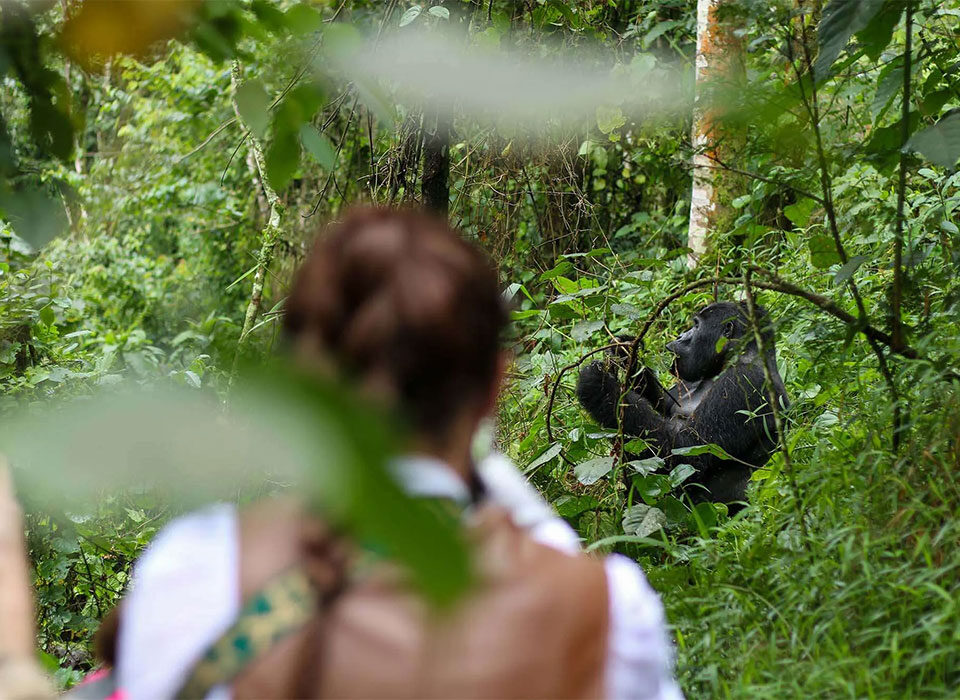
Is Lake Mburo Good for a Short Safari? | Uganda Safari Guide
October 24, 2025
Where to See Shoebill Storks in Uganda | Uganda Birding Guide
October 24, 2025Best Birding Spots in Uganda | Uganda Birdwatching Guide

What Are the Best Birding Spots in Uganda?
Uganda, the “Pearl of Africa,” is not only a land of gorillas, elephants, and breathtaking landscapes — it’s also one of the world’s premier birding destinations. With over 1,080 recorded bird species, Uganda boasts nearly half of Africa’s bird population, making it a paradise for ornithologists and nature lovers alike. From the lush rainforests of Bwindi to the papyrus wetlands of Mabamba Bay, from the Albertine Rift highlands to the open savannahs of Murchison Falls, every corner of Uganda hums with birdlife.
Whether you’re a seasoned birder with a life list to complete or a casual traveler who simply loves the music of the wild, Uganda offers an unmatched birding experience — one that blends vibrant colors, rare species, and awe-inspiring habitats.
In this detailed guide, we’ll explore the best birding spots in Uganda, what makes each one unique, and why every birdwatcher should include them on their safari itinerary.
1. Mabamba Bay Wetland – The Kingdom of the Shoebill
No birding trip to Uganda is complete without a visit to Mabamba Bay Wetland, located on the northern shores of Lake Victoria, about 50 kilometers west of Kampala. This Ramsar-listed wetland is world-famous as one of the best places to spot the Shoebill Stork, Uganda’s most iconic bird.
The shoebill, with its massive shoe-shaped bill and prehistoric appearance, is a dream sighting for birdwatchers. It’s often seen standing motionless among the papyrus reeds, waiting patiently to ambush fish. Early morning boat rides through Mabamba’s narrow channels offer the best chance of spotting this magnificent bird.
Beyond the shoebill, Mabamba is home to over 260 bird species, including African pygmy goose, papyrus gonolek, blue-breasted bee-eater, malachite kingfisher, and purple heron. The area also hosts many migratory birds between October and March.
Because of its close proximity to Entebbe, Mabamba Bay is a perfect half-day or full-day birding destination, often included at the start or end of a Uganda safari.
Highlights: Shoebill, papyrus gonolek, African pygmy goose, swamp flycatcher, malachite kingfisher.
Best time to visit: Early morning year-round, especially during the dry seasons (December–February, June–August).

2. Bwindi Impenetrable National Park – A Birding and Primate Paradise
While most visitors know Bwindi Impenetrable National Park for its endangered mountain gorillas, the park is also one of Africa’s top birding destinations. Its dense montane forest, part of the Albertine Rift, shelters over 350 bird species, including 23 endemics that cannot be found anywhere else in East Africa.
Birding in Bwindi feels like stepping into a living orchestra of sound and color. The park’s trails — such as the Buhoma Waterfall Trail, Mubwindi Swamp Trail, and Ruhija Sector — are ideal for spotting forest-dwelling species.
Some of the star attractions here include the African green broadbill, Grauer’s (African green) warbler, short-tailed warbler, Kivu ground thrush, and yellow-eyed black flycatcher. Birders often describe Bwindi as a once-in-a-lifetime destination, not only for the birds but for the sheer magic of its ancient rainforest.
Highlights: African green broadbill, handsome francolin, Shelley’s crimsonwing, stripe-breasted tit, Rwenzori batis.
Best time to visit: June to August and December to February (dry seasons for easier trekking).
3. Queen Elizabeth National Park – Where Savannah Meets Wetland
Queen Elizabeth National Park, Uganda’s most famous savannah park, is also a birder’s haven. With over 600 recorded bird species, it holds the record for the highest number of bird species found in any protected area in East Africa. Its diverse habitats — lakes, wetlands, forests, and open plains — attract a mix of forest, water, and migratory birds.
The park’s Kazinga Channel is particularly rich in birdlife. During a boat cruise, you can spot African skimmers, pelicans, spoonbills, fish eagles, kingfishers, and open-billed storks along the shores.
The Maramagambo Forest and Ishasha sector are also fantastic for birdwatching. Ishasha, famous for tree-climbing lions, also hosts birds like the Ross’s turaco, broad-billed roller, and black coucal.
Highlights: African skimmer, pink-backed pelican, pied kingfisher, grey-headed kingfisher, papyrus gonolek.
Best time to visit: December to February and June to August, when migratory species are also present.
4. Kibale National Park – The Forest of Chimpanzees and Colorful Birds
Known for its chimpanzees, Kibale National Park is another gem for birdwatchers. The park’s tropical forest is home to more than 375 bird species, including six endemic to the Albertine Rift. The park’s mix of forest and woodland habitats attracts a vibrant variety of birdlife.
One of Kibale’s highlights is the Green-breasted pitta, one of the most sought-after and elusive birds in Africa. Other species include the African grey parrot, white-naped pigeon, African pitta, and black bee-eater.
Birding in Kibale can be combined with a chimpanzee tracking adventure, making it one of the most well-rounded experiences in Uganda. The nearby Bigodi Wetland Sanctuary, a community-run project, adds even more birding opportunities with species such as the white-spotted flufftail, papyrus gonolek, and speckled tinkerbird.
Highlights: Green-breasted pitta, African grey parrot, black bee-eater, yellow-billed barbet, great blue turaco.
Best time to visit: June to September and December to February for dry conditions and good visibility.
5. Murchison Falls National Park – Birding Along the Mighty Nile
Murchison Falls National Park, Uganda’s largest park, offers birding experiences that combine scenic beauty with incredible diversity. Over 450 bird species have been recorded here, thriving in savannah grasslands, riverine forests, and the Nile Delta wetlands.
The Nile Delta near Lake Albert is one of the country’s best places to spot the Shoebill Stork, particularly during morning boat trips. Along the riverbanks, you’ll see African fish eagles, kingfishers, herons, and bee-eaters.
The open plains host ground-dwellers like Abyssinian ground hornbill, Denham’s bustard, and Secretary bird, while forested areas shelter species like grey-headed oliveback, spotted morning thrush, and chestnut-crowned sparrow-weaver.
Highlights: Shoebill stork, Abyssinian ground hornbill, Denham’s bustard, Secretary bird, Goliath heron.
Best time to visit: December to February and June to September (dry seasons).
6. Semuliki National Park – The Birders’ Hidden Treasure
If you’re looking for a birding destination that feels truly wild and off the beaten path, Semuliki National Park is the place to go. Located in western Uganda near the border with the Democratic Republic of Congo, Semuliki lies within the Congo Basin biome, making it the only true lowland tropical forest in East Africa.
The park is home to more than 440 bird species, many of which are central African forest endemics that are difficult to find elsewhere in East Africa. Birders often refer to Semuliki as “Uganda’s birding treasure chest” because it offers species like the Nkulengu rail, Congo serpent eagle, long-tailed hawk, and yellow-throated cuckoo.
The Sempaya Hot Springs area and the Kirumia Trail are particularly productive spots for birding. Because of its remote nature, Semuliki offers an authentic, adventurous experience that serious birders will never forget.
Highlights: Nkulengu rail, Congo serpent eagle, long-tailed hawk, yellow-throated cuckoo, white-crested hornbill.
Best time to visit: February to April and September to November when forest birds are most active.
7. Lake Mburo National Park – Birding in the Heart of the Savannah
Although it’s Uganda’s smallest savannah park, Lake Mburo National Park is a compact birding hotspot with more than 350 recorded bird species. Its combination of acacia woodlands, open grasslands, and wetland habitats makes it a microcosm of Uganda’s biodiversity.
The lake itself hosts African finfoot, African fish eagle, Malachite kingfisher, and African open-billed stork. The woodland and grassland areas are home to red-faced barbet (a species found only here in Uganda), white-winged tit, bare-faced go-away-bird, and Crested francolin.
Boat safaris, guided walks, and game drives all offer fantastic birding opportunities. Because of its location near Kampala, Lake Mburo is ideal for birders who want a quick, rewarding safari experience without long travel times.
Highlights: Red-faced barbet, African finfoot, bare-faced go-away-bird, white-winged tit.
Best time to visit: December to February and June to September.
8. Mount Elgon National Park – Birding on the Slopes of an Ancient Volcano
In eastern Uganda, Mount Elgon National Park is an underrated birding destination with over 300 species, including many that are restricted to highland and forest habitats. The park’s diverse ecosystems — from montane forests to bamboo zones — make it home to species such as Jackson’s francolin, eastern bronze-naped pigeon, black-collared apalis, and white-starred robin.
The Kapkwai Forest Exploration Center is one of the best places for birding, offering guided trails that reveal both forest and edge species. Mount Elgon also rewards visitors with panoramic views, waterfalls, and a cooler climate — a refreshing contrast to the hotter savannah parks.
Highlights: Jackson’s francolin, eastern bronze-naped pigeon, black-collared apalis, white-starred robin.
Best time to visit: November to April when migratory birds are present.
9. Rwenzori Mountains National Park – High-Altitude Birding
The Rwenzori Mountains, also known as the Mountains of the Moon, are a UNESCO World Heritage Site famed for their snowcapped peaks and glacial valleys. For birders, the park’s montane forests and alpine zones offer a unique chance to see high-altitude species that exist nowhere else.
Over 200 bird species have been recorded, including several Albertine Rift endemics such as the Rwenzori turaco, dusky crimsonwing, handsome francolin, and Ruwenzori batis.
While trekking in the Rwenzoris is challenging, birders who make the journey are rewarded with sightings that few ever experience — and some of the most stunning scenery in Africa.
Highlights: Rwenzori turaco, dusky crimsonwing, strange weaver, handsome francolin.
Best time to visit: December to February and June to August for clearer hiking trails.
Why Uganda Is Africa’s Birding Gem
Uganda’s birding appeal lies in its incredible diversity of habitats — tropical forests, wetlands, mountains, lakes, and savannahs — all packed into a relatively small country. The compact geography means you can see hundreds of species within a few days, from the shoebill in the swamps to Albertine Rift endemics in the mountains.
The country’s safety, welcoming people, and experienced birding guides further enhance the experience. Uganda truly offers birding in its purest, most rewarding form.
Recommended Safari Operator: Experiya Tour Company
To get the best out of Uganda’s birding destinations, it’s essential to travel with professionals who understand both the birds and the landscapes. Experiya Tour Company is one of Uganda’s leading safari operators, specializing in birding safaris tailored to your interests and skill level.
Their expert guides have extensive field knowledge and a keen eye for spotting even the rarest species. Whether you’re on a one-day Mabamba trip or a multi-week birding circuit covering Kibale, Bwindi, and Murchison Falls, Experiya ensures every detail is handled — from transport and permits to accommodations and park entry.
Traveling with Experiya Tour Company means not just ticking off species but experiencing Uganda’s birdlife in comfort, style, and depth.



